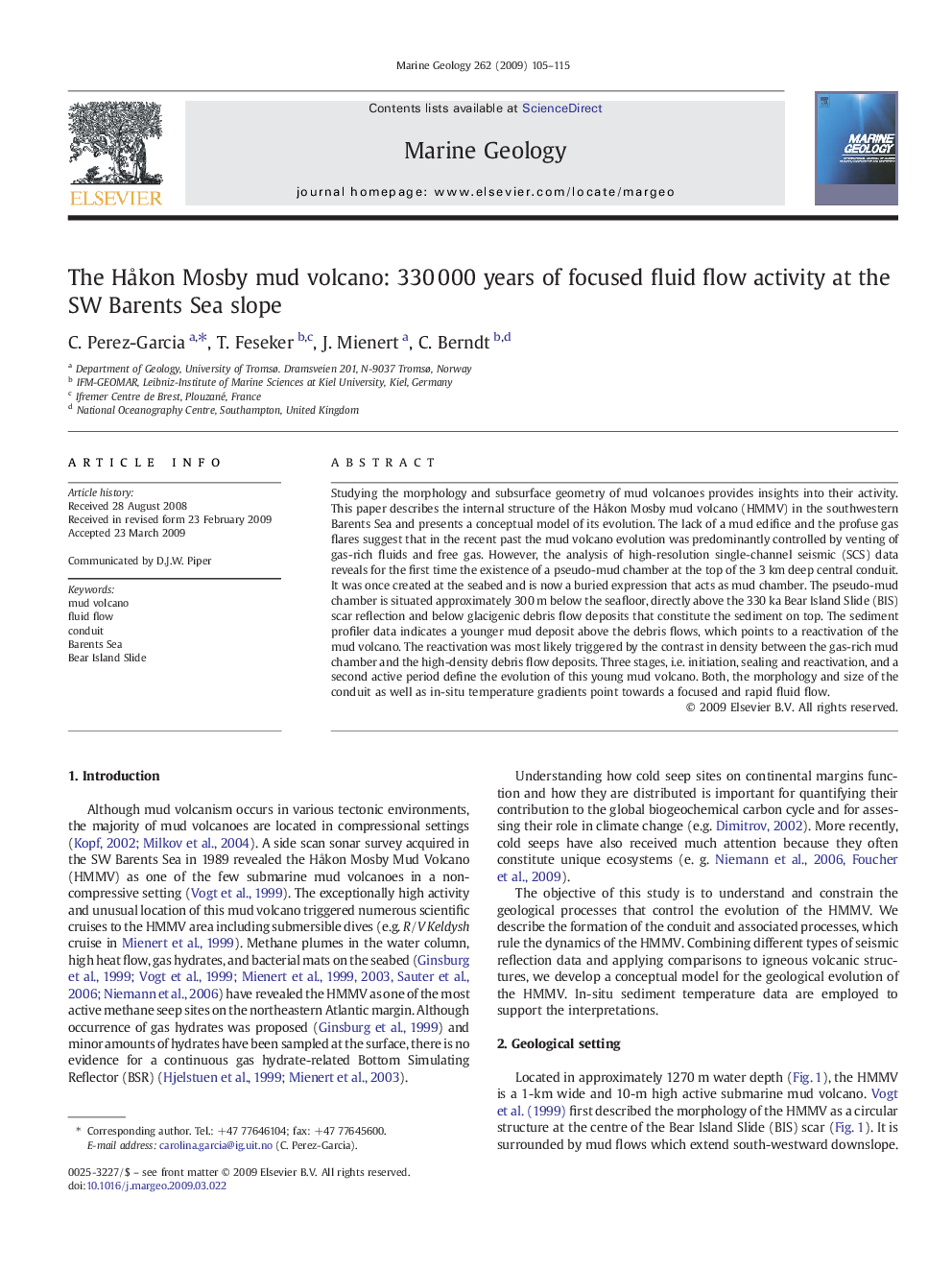| Article ID | Journal | Published Year | Pages | File Type |
|---|---|---|---|---|
| 4719010 | Marine Geology | 2009 | 11 Pages |
Studying the morphology and subsurface geometry of mud volcanoes provides insights into their activity. This paper describes the internal structure of the Håkon Mosby mud volcano (HMMV) in the southwestern Barents Sea and presents a conceptual model of its evolution. The lack of a mud edifice and the profuse gas flares suggest that in the recent past the mud volcano evolution was predominantly controlled by venting of gas-rich fluids and free gas. However, the analysis of high-resolution single-channel seismic (SCS) data reveals for the first time the existence of a pseudo-mud chamber at the top of the 3 km deep central conduit. It was once created at the seabed and is now a buried expression that acts as mud chamber. The pseudo-mud chamber is situated approximately 300 m below the seafloor, directly above the 330 ka Bear Island Slide (BIS) scar reflection and below glacigenic debris flow deposits that constitute the sediment on top. The sediment profiler data indicates a younger mud deposit above the debris flows, which points to a reactivation of the mud volcano. The reactivation was most likely triggered by the contrast in density between the gas-rich mud chamber and the high-density debris flow deposits. Three stages, i.e. initiation, sealing and reactivation, and a second active period define the evolution of this young mud volcano. Both, the morphology and size of the conduit as well as in-situ temperature gradients point towards a focused and rapid fluid flow.
